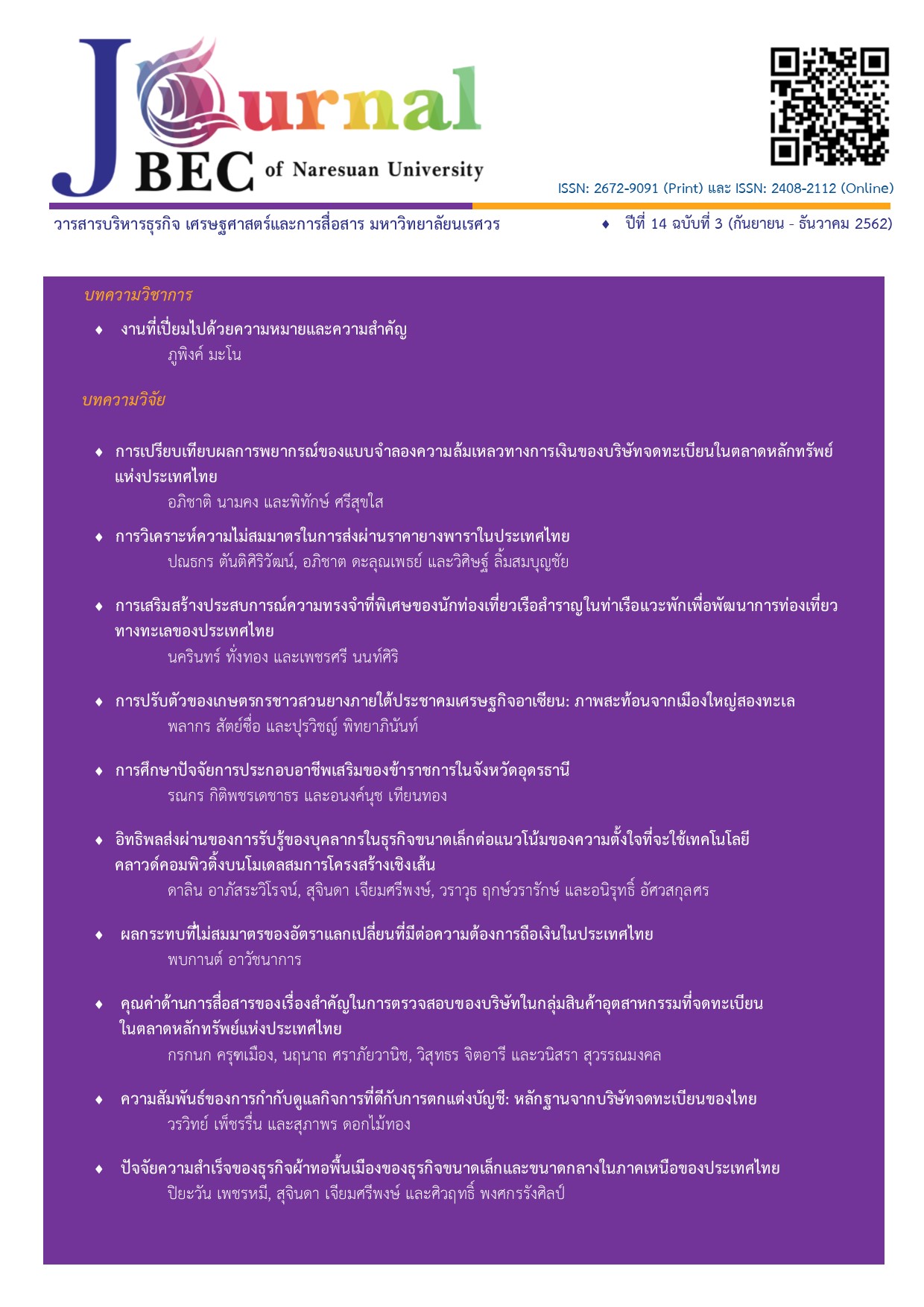Asymmetric effects of exchange rate on money demand in Thailand
Main Article Content
Abstract
Abstract
Previous research assumed that exchange rate has symmetric effect on money demand. In this paper, the asymmetrical effects of real exchange rates on money demand are examined. In doing this, the money demand function in Thailand is estimated by using ARDL and NARDL approach over the period 2000q2-2018q2. The empirical results suggest that there is a cointegral relationship among real narrow money balances, real exchange rate, real GDP growth and the money market rates. Importantly, the asymmetric effects of any exchange rates changes are found. Furthermore, the NARDL approach is more appropriate to estimate the money demand function of Thailand than the ARDL approach. Based on empirical results, one policy implication is suggested that stabilizing exchange rate measures, for example, capital control and foreign exchange market intervention, are required for a stable money demand. These measures help to achieve the primary objective of price stability.
Keywords: 1) Money demand 2) ARDL approach 3) Non-linear ARDL approach 4) Thailand
Article Details
References
Alsamara, M. and Mrabet, Z. (2018). Asymmetric impacts of foreign exchange rate on the demand for money in Turkey: New evidence from nonlinear ARDL. International Economics and Economic Policy, 2018(1), 1-22.
Arwatchanakarn, P. (2018). Exchange rate policy, monetary policy and economic growth in Thailand: A macroeconomic study, 1950-2016. Doctoral dissertation, Ph.D., The University of Newcastle, Newcastle.
Bahmani-Oskooee, M. and Bahmani, S. (2015). Nonlinear ARDL approach and the demand for money in Iran. Economics Bulletin, 35(1), 381-391.
Hossain, A. A. and Arwatchanakarn, P. (2017). Does Money Have a Role in Monetary Policy for Price Stability under Inflation Targeting in Thailand?. Journal of Asian Economics, 53(December), 37-55.
Mahmood, H. and Alkhateeb, T. T. Y. (2018). Asymmetrical effects of real exchange rate on the money demand in Saudi Arabia: A non-linear ARDL approach. PLOS ONE, 13(11), 1-12.
Pesaran, M. H., Shin, Y. and Smith, R. J. (2001). Bounds testing approaches to the analysis of level relationships. Journal of Applied Econometrics, 16(3), 289-326.
Raksong, S. (2012). The money demand behavior under the inflation targeting framework in Thailand. Journal of the Academy of Business and Economics, 12(2), 54-65.
Shin, Y., Yu, B. and Greenwood-Nimmo, M. (2014). Modelling Asymmetric Cointegration and Dynamic Multipliers in a Nonlinear ARDL Framework. In R. C. Sickles and W. C. Horrace (Eds.), Festschrift in Honor of Peter Schmidt: Econometric Methods and Applications (pp. 281-314). New York: Springer New York.

